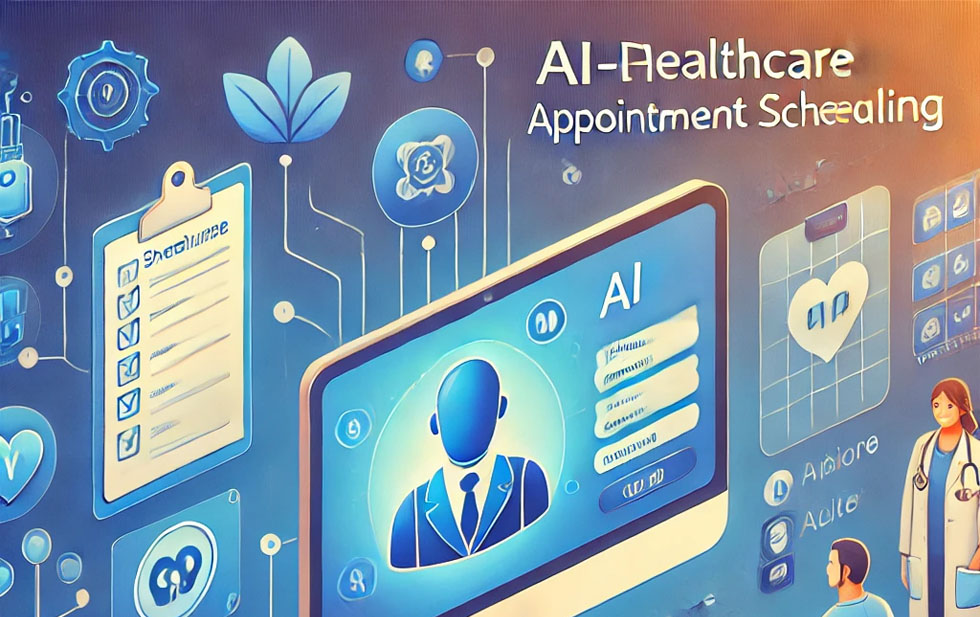AI-Driven Predictive Services: Reshaping Healthcare Appointment Scheduling
AI-Driven Predictive Services: Reshaping Healthcare Appointment Scheduling
The integration of AI in healthcare management, specifically in appointment scheduling, marks a quiet yet significant shift, one that promises to transform operational efficiencies and patient outcomes.
16 August 2024
BACK TO BLOGS

Introduction
This article explores a burgeoning trend within healthcare systems, spotlighted by emerging AI-driven technologies designed to optimize appointment allocations effectively.
The healthcare sector continually seeks efficiency improvements in patient management and administrative tasks. Recent developments in artificial intelligence (AI) bring promise to these areas, particularly in optimizing appointment scheduling processes. This shift towards predictive scheduling using AI not only streamlines operations but also enhances patient care by reducing wait times and preventing system overloads.
What's Changing?
In recent years, AI technologies have been leveraged to anticipate patient inflows and optimize staff allocation. Innovations in AI-driven predictive services are now beginning to tackle appointment scheduling—a critical component in healthcare logistics. By analyzing patterns from historical data, AI models can predict peak times, patient no-show probabilities, and optimal appointment durations (Forbes, 19 December 2023; Hopebuilding, 18 March 2024; Public Sector Network, 25 March 2024). This ability means clinics and hospitals might soon be able to automatically adjust their scheduling parameters in real-time, ensuring maximum efficiency and resource utilization.
Why is this Important?
The implications of AI-driven predictive scheduling are profound. Firstly, it can significantly diminish waiting times, thus improving patient satisfaction and reducing the stress associated with delayed appointments. Additionally, by forecasting patient attendance and adjusting schedules accordingly, healthcare providers can better manage their resources, ensuring that staff are neither underutilized nor overwhelmed—a balance crucial for both economic reasons and employee welfare.
Implications
As predictive scheduling takes hold, we might see a broader reconfiguration of healthcare operations. Hospitals could potentially operate more akin to smart factories, where predictive analytics not only forecast patient flow but also dynamically allocate space and staff resources. Moreover, this efficiency uptick could extend far beyond the individual institution level, potentially influencing national healthcare policy by providing a template for system-wide resource optimization (Article Cede, 22 January 2024).
Questions
-
How will patient privacy be protected as more data is collected to feed these AI systems?
-
Could widespread adoption of predictive scheduling create disparities in care for those less represented in historical data?
-
How can healthcare systems ensure that the AI predictions do not lead to discriminatory practices?
Keywords
AI healthcare; predictive analytics; healthcare appointment scheduling
Bibliography
-
Examining Generative AI's Transformative Effects. Forbes, 19/12/2023.
-
How AI can help 'unlock every cure'. Hopebuilding, 18/03/2024.
-
6 Public Sector Trends Ramping Up Service Delivery in 2024. Public Sector Network, 25/03/2024.
What Role Does Technology Play in Modernizing Medicare Advantage Growth Strategies? Article Cede, 22/01/2024.
Stay Curious,
Matthew, CEO
Shaping Tomorrow
Mini Series: How AI may create new opportunities for Public Services!
Public Services are at the brink of the most important improvement for decades. By rethinking what is possible and incorporating AI assistance to achieve significant better results for citizens the world over.
Automating welfare eligibility screening isn't just about cutting costs—it's becoming a crucial strategy that involves a blend of technology, policy, and societal values. Today's Quick Take exposes a trend in automated welfare determinations that could, given the trajectory of technological adoption and regulatory landscapes, ripple through social systems globally - Check our Quick Take for the the full insight ...
Shaping Tomorrow is all about our Future
- Horizon Scanning
- Options Analysis
- Trends and Weak Signals
- Structured Overviews, Quick Takes, Graphics and Reports
